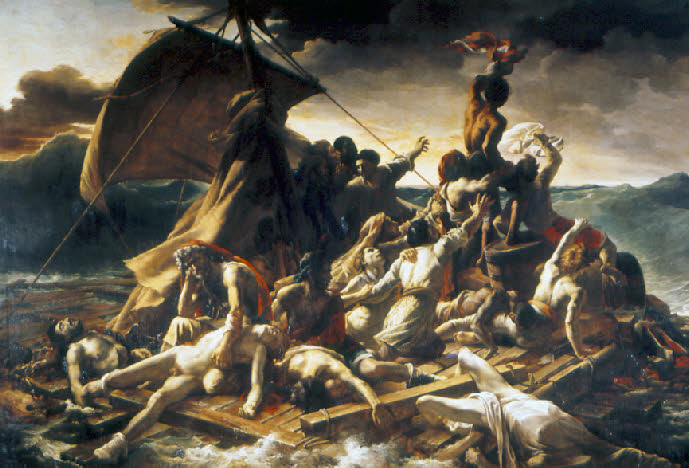


491 cm × 716 cm
Musée du Louvre, Paris
“French painter, draughtsman, lithographer and sculptor. He experienced the exaltation
of Napolean’s triumphs in his boyhood, reached maturity at the time of the empire’s
agony and ended his career of little more than twelve working years in the troubled
early period of the Restoration. When he died he was known to the public only by
the three paintings he had exhibited at the Salon in Paris, the Charging Chasseur,
the Wounded Cuirassier Leaving the Field of Battle, and the Raft of Medusa, and by
a handful of lithographs.
The work that Gericault left behind is a fragment, difficult
to comprehend or fit into the conventional framework of art history. Primarily he
sought a pictorial form with which to represent contemporary experience with dramatic
emphasis and visual truth. The dangers that beset him on his search were, on the
one side, the stylelessness and banality of “picturesque” realism and, on the other,
the stilted artifice of over stylization. Between these two temptations, the Romantic
and the Neo-
(Biographical source: Turner, Jane, ed. The Dictionary of Art. New York: Macmillan Limited, 1996.)

